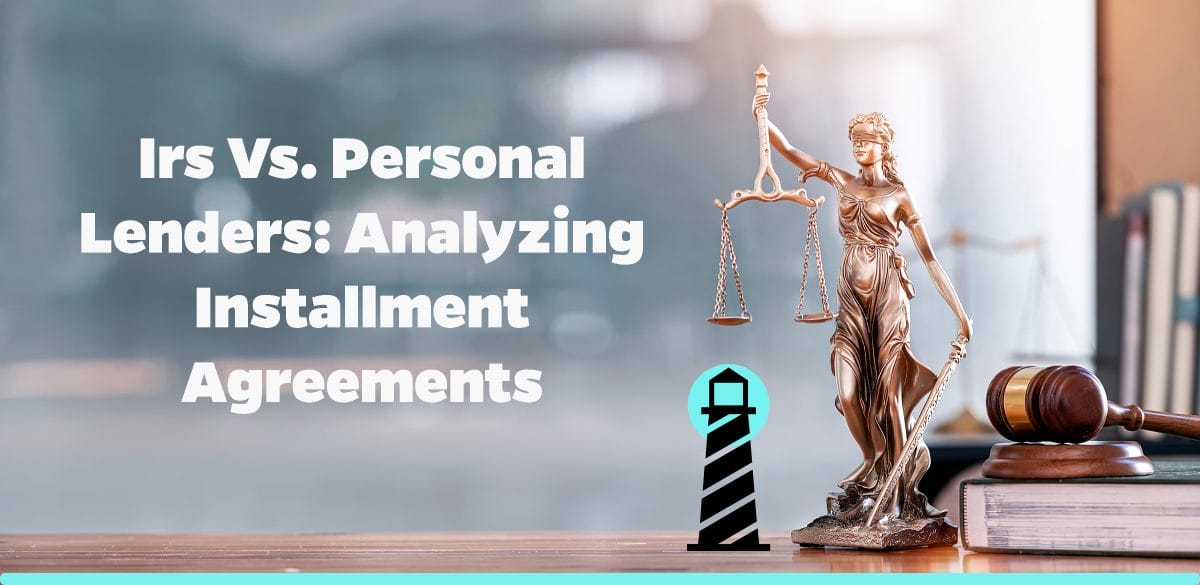Understanding the Role of IRS in Financial Delinquacy Remedies
When faced with tax-related financial issues, two paths commonly stand out for taxpayers: IRS installment agreements or personal lending. Understanding these approaches and their handling of tax debt is instrumental in preparing for unexpected financial obligations. While both options fulfill essentially the same role (i.e., providing financial relief), their approach and execution differ significantly, leading to fundamental implications for the debtor.
It is important to note that the specifics of a debtor’s predicament drastically influence the suitable choice. Each decision carries implications reflecting on debtors’ financial, credit, and tax status.
For clarity, the Internal Revenue Service (IRS) advocates for tax compliance in the United States. In their function, they offer comprehensive taxpayer services, including customized payment systems like the IRS Installment Agreement. This service provides relief to taxpayers unable to settle their tax debt in a lump sum and necessitates navigating a myriad of sophisticated tax norms.
On the other hand, personal lenders (such as banks, credit unions, and lending companies) offer loans to individuals, which effectively supplement repayment potential for taxpayers facing financial setbacks. Moving forward, let’s delve more into these two options for understanding their respective benefits, limitations, and intricacies.
Decoding IRS Installment Agreements
IRS Installment Agreements serve as a lifeline for taxpayers needing to clear their tax debts over an extended period. Predicated on affordability, these agreements factor in the debtor’s capacity to pay, providing tailor-made solutions for handling tax debt.
An IRS Installment Agreement essentially allows taxpayers to pay off their tax dues through manageable monthly payments, as opposed to a one-time, potentially overwhelming installment. Notably, the IRS fixes the schedule based on the debtor’s financial standing, balancing affordability with timely debt clearance.
Key characteristics of IRS Installment Agreements include:
- Customized Payment Schedule: IRS facilitates an affordable, convenient payment plan aligning with the debtor’s earnings and expenditure.
- Interest and penalties: The IRS charges interest and penalties on outstanding debt until the balance is cleared.
- Reduced Collection action: Once an agreement is in place, the IRS substantially ceases its collection activities.
You can find a comprehensive detail on IRS Installment Agreements by visiting the [IRS site](https://www.irs.gov/site-index-search?search=Internal+Revenue+Service+Installment+Agreement).
Investigating Personal Lending as an Alternative
On the flip side, personal lending is an alternative that provides immediate liquidity to taxpayers, enabling them to clear tax debts promptly. These loans come from various lending institutions and require a thorough assessment of the debtor’s creditworthiness.
Personal loans may offer an expedient solution for quickly resolving tax debt issues. However, they carry some inherent risks and should be carefully considered based on interest rates, borrowing terms, and an individual’s financial standing.
Important points to consider with personal lending include:
- Credit Score Impact: Application of personal loans influence credit score. Additionally, failure to pay back on time has detrimental consequences on the credit score.
- Interest Rates: Personal loans can sometimes carry higher interest rates than an IRS Installment Agreement given the unsecured nature of personal lending.
- Liquidity Boost: Personal loans provide an immediate inflow of capital, which can aid in swift clearance of tax debts, thereby reducing compounding interest and penalties
Comparing IRS Installment Agreement and Personal Lending
When comparing between IRS Installment Agreement and Personal Lending, it’s crucial to consider the implications of each.
The IRS Installment Agreement provides a flexible payment option that stops the accumulation of extra penalties, and minimizes collection actions such as property seizure or wage garnishment. It’s more lenient and places less strain on credit scores.
On the other hand, personal lending provides immediate capital, which can be used to pay off the tax debt at once and alleviate stress from increased compounding dues. However, securing such loans may require high credit scores and potentially attract high interest rates which, if not managed properly, could exacerbate an individual’s financial struggle.
The Right Path for You
Dealing with tax debt often entails complex decision making and strategic planning. Making the right choice between an IRS Installment Agreement and personal lending fundamentally depends on a taxpayer’s unique financial situation, tax liability, and long term fiscal goals.
As a rule of thumb, debtors should have an honest conversation about their financial status with a seasoned tax professional. At Brightside Tax Relief, we not only help you understand the complexities involved but also guide you through the entire process to ensure a less taxing way out of your tax burden.
Decoding your right path is a step towards a tension-free fiscal future; and Brightside Tax Relief, with its comprehensive nationwide tax relief solutions, promises to walk that path with you.




